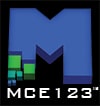This information pertains to the measurement of the speed of the optical computer. The way that computers are usually measured for speed, such as in cycles per second, would not apply in the same way with the optical computer. The reason for this difference is that the optical computer has circuitry that calculates very complex calculations, such as all of the prime numbers approaching infinity, correlations of equivalence of data centers worth of information instantly, and hardware rendering of 3D geospatial displays on a 4D time-axis without waiting until the display would render the timeframe that is accessed for display, such that the entire display timeframe is already prepared for access, all occurring simultaneously. The basic I/O components of one optical CPU board would exceed all of the world’s computing power, quadrillions of times over. This is possible because the movement of one electron would take up as much space and time as completing all of the operations that would have happened before the electron passed on the path through the motherboard, to the CPU, to the video card, and stored on the hard drive, because the photon is able to travel faster, there are greater number of possibilities with one photon vs. one electron, and the computer is no longer revolving around a simple binary system, while the computer is able to compute multiple simple calculations within the same calculations, such as photonic edge programming, pico-timeframes, and multiple programmed photons in the same conduit of circuitry.
- Patrick R. McElhiney
- Optical Systems Engineering (IT-CPHD-OSE)

















